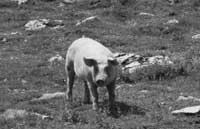Sausages without fat!
Sausages have been known for a long time, since most sausages have as main component the pork and the animal was the first to domesticate, 4,000 years a. C. C.

The initial objective of the sausages was the conservation of meat that could not be consumed immediately. For this reason, the first sausages in history were formed from the drying and coagulation of fresh meat, but our ancestors realized that, adding some species and improving the organoleptic characteristics of the product. Ahumando, for example, not only knew but increased its conservation. In addition, they realized that collecting and protecting in the intestine of dead animals the meat became more manageable.
In general, those that we consume today are pork and spiced fat sausages, with the exception of mondejus, which are made with sheep fat. According to the production form, the most well-known sausages can be classified in:
- Fresh: contain the basic components of the sausages, but do not undergo heating or drying processes. They are white sausage and longaniza.
- Cured: consists of drying a season the guts stuffed with pork and fat. This season usually varies depending on the sausage. The chorizo of Pamplona, the salami, the house chorizo and the txistorra are part of this group.
- Cooked: some of these groups contain blood among their components, which are called morcilla. Others, on the other hand, are made exclusively with animal fat, called mondeju or whites.
Although they are not collected in the intestine, due to their nutritional characteristics, we would include in this group the ham and ham of York. From the nutritional point of view, in general, they have a high percentage of saturated short chain fats, one of which helps to raise more than enough the level of fat in blood. The amount of proteins is also important and, in the case of morcillas, some are rice and others contain carbohydrates thanks to onion and leek.
Although they were essential foods, nowadays, due to the large amount of food available and the tendency to excessive consumption of fat, it is recommended that adults take them sporadically. In the case of children, aware that they are in the process of growth and that their energy needs are greater, they can do so more often, but with a maximum of 3 or 4 times per week.





